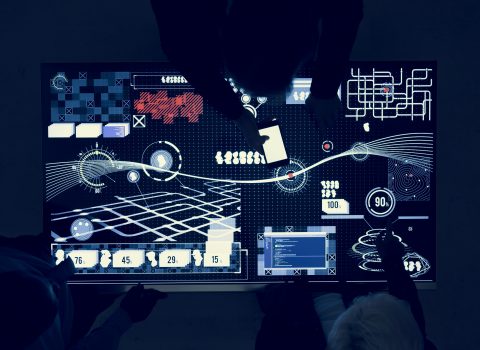
Can Artificial Intelligence help achieve the Sustainable Development Goals?
Artificial Intelligence (AI) and sustainability are currently highly discussed topics in both the political and scientific debate and they appear to be two major challenges that will stay for the coming decades
Artificial intelligence has long fascinated and frightened for its disruptive potential, giving rise to creative narratives and science fiction scenarios, but research has started to emerge questioning the real potential of AI to enable sustainable development and accelerate the achievement of important international goals such as the 17 Sustainable Development Goals (SDGs) presented in 2015 by the United Nations.
For instance, the Think Thank “AI forSustainableDevelopment Goals” listed in its website a series of AI projects related to each Sustainable Development Goal.Some interesting examples are:
– The MERON application – Methods for Extremely Rapid Observation of Nutritional Status, a machine learning tool that can detect malnutrition status from photographs through facial recognition. (Kimetrica 2017)
– OceanMind, a project that uses artificial intelligence combined with satellite imagery to identify illegal fishing practices in order to protect biodiversity and prevent slave labour. (OceanMind)
– IBM’s financial assistant, which predicts account balances and major, recurring expenses to help low-income people quantify financial risks and provide them with information to prevent below zero balances (IBM Research Editorial Staff 2017)
In the discussion paper “Applying AI for social good”. (Chui et al. 2018) , researchers from the McKinsey Global Institute (MGI) identify 160 cases of possible AI use cases for social good applicable across all 17 Sustainable Development Goals. According to the discussion paper, AI seems to be especially applicable to health, hunger, education, security and justice, equality and inclusion. For example, AI could be used to improve efficiency in food distribution, prevent famine, or detect early signs of diseases, such as cancer and diabetes, through image recognition and heart rate sensors. Among the various applications, the authors also mention AI potential to use vaccination data to predict the spreading of viruses and diseases. In the education sector, on the other hand, AI could help tailor teaching content based on students’ individual characteristics and past performance and detect early signs of distress.
However, the MGI paper emphasizes that the number of use cases is not an assessment of the impact of AI on the Sustainable Goals, but it rather reflects the natural path of discovery and development of AI, which may find more direct applications in certain areas.
On the contrary, artificial intelligence could also hinder some SDGs. Hereford, Vinuesa et al. (2020) analyse through qualitative methods the dual effect of artificial intelligence on the Sustainable Goals and find that AI may act in favour of 134 of the targets used to measure the Sustainable Goals and negatively impact 59 of them.
In my master’s thesis, I attempted a first quantitative estimate of the correlation between artificial intelligence, as measured through the Stanford HAI AI Index, and the progress towards the SDGs, summarized in the Bertelsmann Index. I used a linear mixed-effects model on panel data for 25 countries between 2017 and 2019, where the effect of AI and the interaction between AI and time were treated as fixed effects and GDP per capita as a control variable. Country-level variability was accounted for by introducing random effects for the intercept and the slope of the effect of AI on the SDGs across countries.
The analysis reveals both positive and negative correlations and many results that are not statistically different from zero. This is consistent with the literature that predicts both positive and negative effects of artificial intelligence on the Sustainable Development Goals. It is particularly interesting to note that at the aggregate level the positive and negative effects seem to offset each other since the overall effect on the index combining all 17 SDGs is never significant, but at a more disaggregate level significant results emerge for some individual Goals. After removing outliers, the correlation between AI and the sustainable development appears positive and significant for Goals 3, 4, 15 and 16 which correspond respectively to: “Health and Welfare”, “Quality Education”, “Life on Earth”, “Peace, Justice and Strong Institutions” and negative significant for Goal 17 “Partnership for the Goals”.
Although there is still little data available and the use of AI for sustainable development is still at an early stage, the results highlight some interesting correlations and are consistent with the literature.
Artificial intelligence therefore seems to be a double-edged sword, which needs to be steered int the right direction in order to enhance its potential and mitigate the risks. Hence, public policies play a vital role, as it needs to keep pace with AI developments and be able to leverage its benefits as well as effectively regulate it.
References
Chui, Michael; Harrysson, Martin; Manyika, James; Roberts, Roger; Chung, Rita; Nel, Pieter; van Heteren, Ashley (2018): Applying AI for social good. Discussion Paper. In McKinsey & Company.
IBM Research Editorial Staff (2017): AI-based financial advisor for low-wage workers. In IBM Research, 10/10/2017.
Kimetrica (2017).
OceanMind: OceanMind | Empowering Fisheries Compliance, checked on 3/29/2021.
Vinuesa, Ricardo; Azizpour, Hossein; Leite, Iolanda; Balaam, Madeline; Dignum, Virginia; Domisch, Sami et al. (2020): The role of artificial intelligence in achieving the Sustainable Development Goals. In Nat Commun 11 (1), pp. 1–10.



